Halfway House vs Sober Living What is a Halfway House
In a sober living house environment, professionals are available to help you navigate major changes in your new life. They can also help you determine what length of stay is the right one for you. They also tend to be affiliated with addiction treatment centers that provide outpatient programs. Most homestays will cost between $500 to $1,200 monthly, with all services included. But they can be anywhere between $300 and $2,000, depending on the neighborhood and amenities.
Sober Living Homes
Sober living homes are generally less expensive than inpatient treatment centers. Yes, many sober living homes cater to distinct demographics, focusing on gender, age, or specific recovery needs. For instance, certain homes may https://northiowatoday.com/2025/01/27/sober-house-rules-what-you-should-know-before-moving-in/ design programs for young adults or women, thereby fostering a comfortable environment that resonates with those populations. This demographic focus helps enhance the community experience, building stronger social networks and peer support systems vital for recovery. Nonetheless, the benefits of sober living homes usually outweigh the drawbacks when they are well-managed and actively encourage residents’ engagement in recovery activities.
Arizona cracked down on Medicaid fraud that targeted Native Americans. It left patients without care.
By offering comprehensive information on local AA meetings, the directory serves as an invaluable resource for those looking to reinforce their sobriety outside the confines of a sober living house. Furthermore, the directory’s resources, including a sobriety calculator and guidance on finding local support groups, are tools that can help residents of sober living houses navigate their recovery path. The directory, understanding the importance of community and ongoing support, aligns with the ethos of sober living homes to empower individuals in their pursuit of a sober, fulfilling life.
Even so, rent can vary greatly, with some rooms available from $500 up to $900 or more a month. Costs will differ depending on the living situation (private vs. shared room), staff pay rates, and, most significantly, the home’s location. Some are run by private companies, others by nonprofit groups, and some even by former residents. What they all have in common is a shared commitment to staying free from drugs and alcohol to support everyone’s sobriety.
A great way to find a sober living house in your area is first to explore your network. Not all sober living homes are equal, so finding a place that an acquaintance has recommended could be helpful. Going to a sober living house has been proven to support sobriety efforts, with results ranging from a decreased amount of relapses to long-term sobriety.
Unlike inpatient facilities, these homes provide a less structured atmosphere that still supports recovery efforts. Residents are typically required to follow house rules, contribute to the community, and engage in some form of recovery activity, such as attending AA meetings. The primary goal is to foster independence while still providing a supportive network, emphasizing the balance between freedom and accountability in the recovery process. The concept of sober living houses has been an evolving solution in the journey of addiction recovery.
Rudy Gobert, Mouhamed Gueye nearly hit by piece of falling Jumbotron at Target Center
At a sober living home, you can benefit from a house manager who will oversee operations, and you can count on other residents for help as you move toward independent sober living at home. You can join a sober living home immediately after rehab, or you may find that adjusting to life outside of rehab is difficult. That’s when sober living can help with the transition from rehab to your normal environment. Not everyone who goes through drug or alcohol detox and rehab will need this step, but sober living can help reinforce what you’ve learned in rehab. With the assistance of a support network, it’s less likely that you will relapse.
- Conduct some online research or call facilities in your area for more information.
- Nighttime is often reserved for free time when you can call loved ones, read books, or watch television.
- Police intervened but didn’t yet fully understand what was happening, the state senator said.
- Some facilities require a minimum number of days of sobriety from substance abuse, but many will work with you to determine if you’re a good fit.
- Sober living houses are often recommended for folks finishing up a drug rehabilitation program.Leaving the structure of a treatment program can be jarring, sometimes triggering a relapse.
With little structure and monitoring, someone new in their recovery may want to a higher-level sober living home. Smith and Clark recommend seeking out an SLH after completing clinical treatment to best practice the skills learned in the program alongside others in recovery. Sober living homes in the U.S. aren’t covered by insurance and are often paid for out of pocket. Payment plans, scholarships, grants and government-funded programs may be available for residents facing financial hardship. Organizations that offer SLH scholarships include CLEAN Cause Foundation and Ben Meyer Recovery Foundation, per Dr. Kennedy and Clark.
Providing support through grants
By the summer of 2022, Jeffrey Hustito was enrolled in Beyond4Wallz Health and Wellness. The new outpatient treatment program held classes in an office building in north Phoenix and placed its clients in houses throughout Phoenix, according to the owner. Reva Stewart, a community advocate who started a nonprofit to help victims and their families, estimates the crisis led to hundreds of deaths, extending beyond those that occurred in sober living facilities. She said many people recruited into programs were reported missing and some lost access to treatment or became homeless when the state’s crackdown led to the Sober House Rules: What You Should Know Before Moving In abrupt closure of facilities that housed people. Halfway houses serve people leaving prison, mental health facilities, and rehab centers.
What Is the Jellinek Curve in Addiction and Recovery?
AHCCCS did not appear to grasp the scope and complexity of the fraud scheme for another year, despite red flags and the spike in payments to treatment programs, Adams said. The Arizona Republic last year also reported that a medical director at the agency became concerned in 2021 about unsafe behavioral health settings. At least 40 Native American residents of sober living homes and treatment facilities in the Phoenix area died as state Medicaid officials struggled to respond to a massive fraud scheme that targeted Indigenous people with addictions. While the term sober living is used to define those who are living in a sober house, it does little to elaborate on what happens in a sober living facility. Those who decide to live at a sober living facility can expect to be in a house or complex filled with other individuals who are on their last steps of recovery from substance abuse or alcoholism. These facilities do not permit any type of substances on the grounds that could potentially be abused, be it mouthwash with high alcoholic content, after-shave or things like cigarettes.
- Most homestays will cost between $500 to $1,200 monthly, with all services included.
- You can enjoy healthy meals in the evening, followed by group therapy sessions.
- Sober living homes can be beneficial for those who are transitioning from inpatient treatment, but they may be too far ahead in the process for many who are looking to start their recovery journey.
- Many sober living houses emphasize a community-oriented approach, organizing activities, group outings, and shared meals.
Hannah BassettInvestigative Reporter Health
A medical examiner would later note that in his final weeks, Hustito made multiple emergency room visits. One trip to Banner Desert Medical Center was on Dec. 9, a day after he turned 43. Authorities said he drank a half bottle of rum and smoked fentanyl at his sober living home.
Samba Recovery never miss an opportunity
Leaving the safety of treatment for a temptation-packed daily life is a huge step! Through a combination of accountability and education, this supportive housing solution helps us prepare for tough real-world scenarios after treatment. Sober living houses provide a supportive, accountable environment that promotes responsibility, builds life skills, and supports lasting sobriety. The most important rule in any sober living house is that no drugs or alcohol are allowed. This zero-tolerance policy ensures a safe space where all residents can focus on their recovery without distraction or temptation. Sober living houses emphasize the importance of engaging with AA meetings and developing a support network.
By selecting a sober living home that aligns with individual characteristics and recovery goals, residents can facilitate a smoother transition to sober living. Residents may face challenges such as limited privacy and potential conflicts with housemates. Each sober living home has specific entry requirements, making them more or less appropriate depending on individual circumstances and needs. Factors such as prior treatment experiences, personal lifestyle choices, and mental health conditions also play significant roles in determining fit.
By handling expenses such as rent and utilities, residents learn to manage their finances responsibly—a skill necessary for independent living. Residents are expected to follow specific house rules, which may include attending regular meetings, completing chores, adhering to curfews, and sometimes attending outpatient therapy or 12-step meetings. Drug detox can vary according to the patient’s addiction factors, including the substance abused, how long the addiction has lasted, the patient’s medical condition, if any other disorders are present, and more.
Writing the 12 Steps AA History Alcoholics Anonymous Cleveland
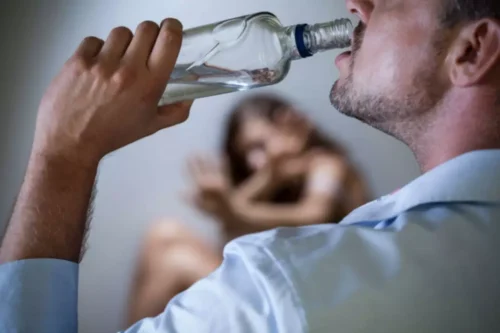
But what happens when the person you need to make amends with dies before you’re able to apologize and change your ways? Unfortunately, this scenario plays out much too often in the lives of people who didn’t get a chance to correct their mistakes and past behaviors in time. Many people find that these two steps are some of the most difficult challenges in recovery. After all, you have to face your past and the hurt that you may have caused to others, whom you care about. This might bring to the surface feelings of guilt and feeling badly about yourself.
#3 – Remember that actions speak louder than words.
- Unfortunately, there are many things that we do in our using that we can not rectify with tangible goods or direct amends.
- Their parent may feel more pain for their addicted child’s inability to get sober than the material items lost due to the thefts.
- Willingness is the openness to change and try new approaches.
- Soon the two men had convinced other alcoholics in Akron to join the Oxford Group meetings, just as Wilson had previously done in New York.
- I would apologize for my mistakes and pray about it to have the knowledge to not repeat my actions.
Through these principles, individuals in recovery can develop the tools and mindset necessary to maintain sobriety, improve their relationships, and lead more fulfilling lives. Finally, one day, Dr. Silkworth took me back down to my right size. You can find a 12-step program by downloading the AA Meeting Guide app, which connects you to more than 100,000 meetings in person and online. Additionally, you can search for virtual AA meetings by visiting the AA Online Intergroup page. Even simply searching “AA meetings near me” in your web browser can pull up state or local websites with lists of various nearby meetings. People are encouraged to take an honest look at themselves, then deconstruct their egos and rebuild, little by little.
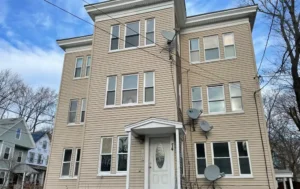
Support Your Recovery
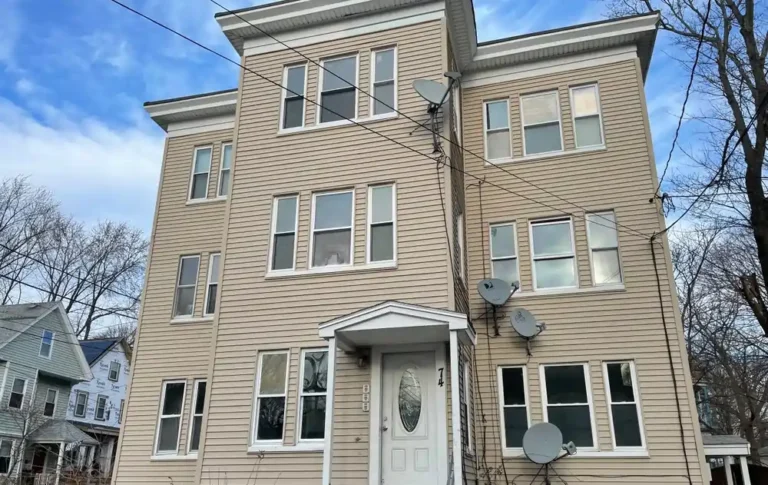
How do you prove your worth to others after so many failed chances? An example would be telling someone how sorry you are that you stole from them and actually giving back what you took. This tends to living amends result in enhanced relationships and repairing ones that were injured. This doesn’t mean that you never ever think about drinking. It means that if the thought comes into your mind, you can easily let it go and not obsess. This means you can walk down the wine aisle at the grocery store and hardly be affected.
How Christian Are The 12 Steps?
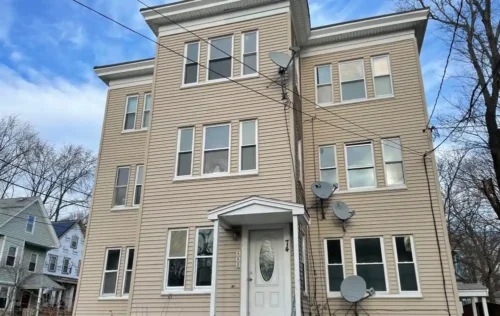
He based his principles on that work and on his meetings with Smith, whom he also helped to achieve sobriety. He believed strongly that alcoholism affected the body, mind, and spirit. Although the organization grew slowly in those early days, it also grew steadily. For the fourth step, the Big Book suggests a detailed and probing process of written self-evaluation. It includes listing all people, institutions, and principles that are the object of anger or resentment, and writing down one’s own contribution to all broken relationships.
- With the publication of the organization’s principles and writings, word began to spread about its success.
- This was a good start for me but there were still a lot of „I’s“ as I experienced this step.
- This is a person who has completed all or most of the 12 Steps of Alcoholics Anonymous, has been in the fellowship for at least a year, and are stable in sobriety.
- It was he who was soon to contribute a very great idea without which AA could never had succeeded.
- Instead, all of your energy and focus can be spent where it’s really needed, which is on overcoming addiction.
- It’s one thing to take personal inventory and admit our wrongs one time.
But he may have made his greatest contribution through Wilson. The spiritual roots of the 12 Steps are complex, tangled between experience-oriented evangelical Christianity and secularizing, psychologizing tendencies of American religious pluralism. Understanding how these sources produced the 12 Steps can help Christians know how to interact with them today. Awareness is about staying mindful of our thoughts, emotions, and behaviors.
How Many Times Is God Mentioned in the 12 Steps?
Willingness is the openness to change and try new approaches. It involves being receptive to guidance and letting go of old habits and thought patterns. Faith involves surrendering control and trusting in something beyond yourself for guidance and strength. It’s about finding a source of support and direction to help navigate the recovery challenges. This principle instills optimism and the courage to pursue a future free from alcohol dependence. It motivates me to begin and continue the recovery journey, even when facing challenges.
It works when other activities fail.” In other words, A.A. Members share their testimony not simply out of concern for others, but also out of concern for themselves. Having had a spiritual awakening as the result of these steps, we tried to carry this message to alcoholics, and to practice these principles in all our affairs.
Alcohol Withdrawal: Symptoms, Treatment & Timeline
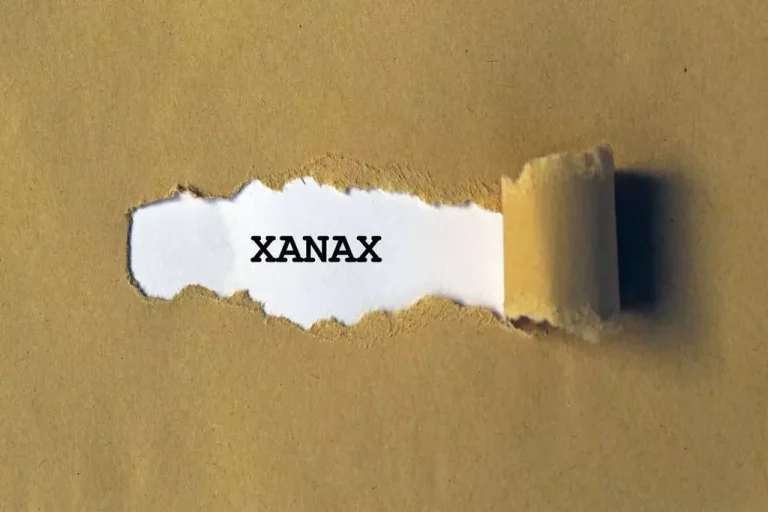
Minor symptoms of alcohol withdrawal can start as soon as six hours after the last drink of alcohol. Slowly decreasing the amount you drink over time can spare your body from withdrawal symptoms. This is because drinking heavily over a long period can cause your body to become physically dependent on alcohol.
Long-Term Alcohol Use and Weaning
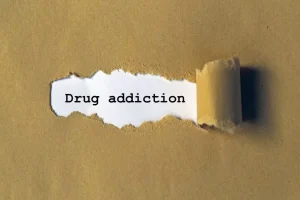
Alcohol proof is the amount of alcohol found in distilled spirits or liquor. Smaller drinks with a higher percentage of alcohol are stronger than the same size drink containing a lower-proof liquor. Find an accountability partner or someone you can call to keep you on track when you want to drink. Build a network of people you can go to when you need help, join a support group or see a therapist.

Loop in a Therapist or Addiction Specialist
- Stress is a common trigger that makes it hard to modify your alcohol intake.
- Aside from unavoidable triggers, tapering off alcohol can also have side effects which can be difficult to manage at home.
- This can help your body adjust, and it can be easier to manage than quitting cold turkey.
- Tapering is a more cost-effective method of stopping alcohol use, especially for those who do not have healthcare insurance or the resources needed to get a professional detox.
- Withdrawal usually begins 6 to 8 hours after the last drink and peaks within 72 hours.
Seeking help as early as possible during the withdrawal process is the best way to stay safe as you cleanse your body of alcohol. It can be tempting to just “rip off the Band-Aid” when getting sober, but tapering off alcohol is often much safer—and much less stressful. Rather than quitting drinking abruptly (or “cold turkey”), many professionals recommend gradually reducing your drinking (or tapering) over time. This can give your body the chance to adjust, helping you avoid the worst of withdrawal symptoms. An alcohol taper can be effective in beginning recovery and help set a realistic goal for those not ready to quit alcohol completely, but they’re not for everyone. Someone who has been drinking heavily for a long period may struggle with cravings and alcohol withdrawal symptoms, leading to relapse.
How To Taper off Alcohol Safely and Effectively
- Understanding and preparing for these difficulties can greatly enhance the chances of successful recovery.
- If you find it is difficult to prevent yourself from drinking too much and getting drunk, locking your alcohol up in a cabinet and giving your friend or family member the key can help.
- Tolerance, dependence, social habits, setting, the biology of the individual and more must all be considered.
If you have a severe level of addiction or dependency, you may need a detox program. Your insurance plan may cover some or all of the cost of medical detox for drugs and alcohol. Our online health insurance verification system will estimate your in-network and tapering down alcohol out-of-network deductibles, coinsurance percentages and out-of-pocket maximums.
Unveiling Simply Explained Cognitive Therapy Techniques
- BetterHelp can connect you to an addiction and mental health counselor.
- Essentially, when an individual drinks, the brain amplifies certain activities to counterbalance the depressive effect alcohol has on it.
- Replacing alcoholic beverages with non-alcohol drinks is a great method of helping during a taper.
- If alcohol withdrawal is so dangerous, is tapering off alcohol necessary for everyone who drinks?
- Antidepressant medications are not meant to be used for treatment of Alcohol Use Disorder unless there is evidence of a co-occurring disorder for which an antidepressant is an indicated treatment.
- Some people find that their anxiety or mood swings will improve as they cut back.
It is sometimes possible to taper your alcohol use at home if your AUD isn’t severe. Although, you’ll need support if you want to successfully and safely taper at home. This may work for many people, but in practice each individual will respond best to a different pace, and each doctor will have their own recommendations. The risk of tapering too slowly is that you won’t stick with it, while the risk of tapering too fast is severe withdrawal. If you experience dangerous signs such as high blood pressure, racing heart, or arrhythmias, slow your taper and seek assistance. Also, your insurance should cover addiction treatment services, so look for therapists and/or rehabs in your network to help reduce the costs.
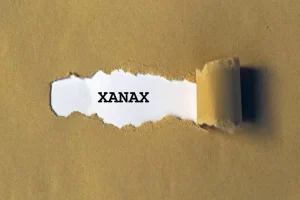
Alcohol Use and Your Health Alcohol Use
Receive free access to exclusive content, a personalized homepage based on your interests, and a weekly newsletter with the topics of your choice. The number of drinks you regularly consume actually matters more than how intoxicated you feel, Dr. Schneekloth says. That may seem strict, but Terry D. Schneekloth, M.D., a Mayo Clinic psychiatrist with expertise in alcoholism and addiction, explains that the evidence backs up this limit. Receive free access to exclusive content, a personalized homepage based on your interests, and a weekly newsletter with topics of your choice. If you are on any medications, talk to your health care provider about how alcohol may affect them. Get helpful tips and guidance for everything from fighting inflammation to finding the best diets for weight loss…from exercises to build a stronger core to advice on treating cataracts.
- Each of those consequences can cause turmoil that can negatively affect your long-term emotional health.
- In addition to being uncomfortable, dry mouth can lead to inflammation of the mouth and reduced salivary flow, which contributes to tooth decay.
- Heavy drinking can also cause the pancreas to produce toxic substances that can lead to organ damage.
- Lowered inhibitions can lead to poor choices with lasting repercussions — like the end of a relationship, an accident or legal woes.
- Because the added risk is minimal, however, cutting back isn’t necessarily a big priority.
Understanding Alcohol and Its Effects
The effects of alcohol on the liver can change with short-term and long-term use. Alcohol can have a toxic effect on the central nervous system (CNS). Additionally, as it is a CNS depressant, it can cause difficulties with thinking abilities and coordination. This may increase the risk of a traumatic brain injury from a fall or accident. In 2019, alcohol-impaired driving fatalities accounted for 10,142 deaths.
Compromised Immune Function
Lowered inhibitions can lead to poor choices with lasting repercussions — like the end of a relationship, an accident or legal woes. Each of those consequences can cause turmoil that can negatively affect your long-term emotional health. Steatotic liver disease develops in about 90% of people who drink more than 1.5 to 2 ounces of alcohol per day. “Some people think of the effects of alcohol as only something to be worried about if you’re living with alcohol use disorder, which was formerly called alcoholism,” Dr. Sengupta says. When you stop drinking, you might notice a range of physical, emotional, or mental health symptoms that ease as soon as you have a drink.
Alcohol use can also lead to more lasting concerns that extend beyond your own mood and health.
Brain damage and accidents
And no matter which category you fall into, there are consequences. “You subject your body to more health risks, to more toxicity and you begin a cycle of withdrawal problems,” she adds. The loss of judgment that comes from binge drinking can cause you to make poor choices, too, including driving under the influence, physical altercations and even further physical injury. One study found that birth defects are four times more likely if the mother has been drinking heavily in the first trimester (29). Many studies have concluded that alcohol use during pregnancy increases the risk of miscarriage, birth defects, and cognitive and developmental problems (26, 27, 28).
During early-stage liver disease, fibrosis is often reversible if alcohol use is permanently stopped. When alcohol enters the bloodstream, it is metabolized (broken down) by the liver into a toxic chemical called acetaldehyde, which is further metabolized to acetate. Acetate is then broken down to water and carbon dioxide, which are eliminated from the body. Alcohol interferes with calcium balance, vitamin D production, and cortisol levels, adding to the potential weakening Addiction as a Coping Mechanism and Healthy Alternatives of bone structure.
In the long term, it can worsen your overall mental and physical health (15). Excessive drinking affects your health and almost every part of your body. It can not only damage vital organs but also affect your mood and behavior. Alcohol consumption can have immediate and short-term health impacts on the body. These impacts can vary depending on factors such as the amount of alcohol consumed, the rate of consumption, and the individual’s body weight and metabolism.
Drug addiction substance use disorder Symptoms and causes

These drugs can be part of a person’s therapy for opioid use disorder. They are therapeutic treatments, not substitutes for the drugs causing the person’s problem. Patients who are highly motivated and have good social support tend to do better with the support of these medications.
Opioid Treatment Program Directory
This medicine is different from methadone and buprenorphine because it does not directly prevent cravings or withdrawal. Instead, according to the NIH, it prevents you from feeling the high you get when taking opioids. Treatment will also help you recover and hopefully prevent you from using the drug again in the future. Treatment is highly individualized — signs of opioid addiction one person may need different types of treatment at different times. About 45% of people who use heroin started with misuse of prescription opioids. Opioid dependence simply refers to the development of tolerance or withdrawal.
General Health
Certain opioids, including fentanyl and carfentanil, can be deadly in very tiny doses. Heroin is frequently contaminated with fentanyl and carfentanil and can cause a fatal overdose in minutes. The potent opiods have also been showing up in counterfeit prescription painkillers and in cocaine. Approximately 40 percent of the 42,249 opioid overdose deaths in 2016 involved a prescription opioid.
Treatment for opioid use disorder
An initial proposal was made in 1995 to amend the law to allow for outpatient prescription, and this was eventually approved after a lengthy debate and revision process in 2000—the DATA 2000 legislation. In 2002, the FDA approved buprenorphine for the use of opioid use disorder 43. It can be incredibly difficult to watch a loved one experience opioid use disorder. Remember that opioid use disorder is a medical condition that requires treatment and support from trained professionals. Long-term opioid use causes substantial changes to the brain and other organs.

Buprenorphine is typically increased in 2-4mg increments, up to 12mg total on the first day and then titrated up over the next two days up to 24mg. However, it subsequently has become clear that most patients can safely initiate buprenorphine at home, following instructions to wait for moderate withdrawal to develop, with phone backup https://ecosoberhouse.com/article/relapse-prevention-plan-how-it-can-help-you-stay-on-track/ in case of questions or problems 63. Your loved one also is at greater risk of opioid use disorder if they get opioids without a prescription.
- According to the DSM-5, a person must have experienced at least two of the 11 symptoms within the past year.
- They are typically held after the person has been approached about their addiction, but denied having a problem or refused to get help.
- It is a disorder in which someone is misusing opioids to the point where it is becoming difficult for them to be able to stop using them or decrease their use.
- They may order drug tests and evaluate prescription drug monitoring program reports.
- AMERICAN Pickers star Mike Wolfe has claimed Frank Fritz struggled with a secret opioid addiction that led to the fan-favorite’s firing from the History Channel show.
- Due to their pharmacological effects, they can cause difficulties with breathing, and opioid overdose can lead to death.
- Get professional help from an online addiction and mental health counselor from BetterHelp.
Recognizing An Opiate Addiction
An opioid overdose can happen when a person takes too much of an opioid or a combination of opioids and other drugs. Adverse childhood experiences (ACEs) are strongly related to the development of a wide range of health issues throughout a person’s lifespan, including substance use disorders. Several studies have found that about half of people who experience a mental health condition during their lives will also experience a substance use disorder and vice versa. Heroin is often easier to get than opioids that are meant to be prescriptions. Lately, powders and pressed pills that are illegally sold as heroin, cocaine, crystal meth or even prescription opioids pills actually contain doses of fentanyl that are very dangerous and often deadly.
Although generally safe, there remains a risk of diversion, sedation, and overdose, especially when combined with other substances. Newer, long-acting parenteral formulations of buprenorphine, mainly the long-acting injections, have the potential to improve adherence and thus expand on the effectiveness and dissemination of buprenorphine. Initiation of naltrexone requires that a patient with opioid use disorder and current physiological dependence first be fully withdrawn so that little or no opioid agonist remains on receptors. This is because naltrexone, as an antagonist with high receptor affinity, will displace opioid agonists still present on receptors, producing an abrupt drop in agonist effect that results in precipitated opioid withdrawal.

- If your health care provider prescribes a drug with the potential for addiction, use care when taking the drug and follow instructions.
- NOWS can cause early labor, fetal growth restriction, placental abruption, and fetal death among other problems.
- Experiencing euphoria after taking opioids may be a warning sign of vulnerability to opioid addiction.
- Barbiturates, benzodiazepines and hypnotics are prescription central nervous system depressants.
Substances such as alcohol, marijuana and nicotine also are considered drugs. When you’re addicted, you may continue using the drug despite the harm it causes. OUD can affect anyone — even if they were originally prescribed opioids by a doctor. There are a number of physical, psychological, and behavioral symptoms that may indicate that professional recovery treatment could be the way to go.
Opioids have high addiction potential because they activate powerful reward centers in your brain. The other 55% from each settlement goes directly to Oregon cities and counties and must be used to address substance use disorder. Opioid use disorder can lead to serious consequences like addiction or even death. Reach out for help if you suspect an opioid use disorder so that you or a loved one can get help. Opioid use disorder is a challenging condition, but help is available. Many people are able to achieve abstinence through therapy, medication, and support from loved ones.

- Signs and symptoms of inhalant use vary, depending on the substance.
- The most serious risk in the treatment of patients with opioid use disorder is opioid overdose, which is inherent in the disorder.
- Opioids can lead to physical dependence within a short time — as little as four to eight weeks.
- Still, there are red flags that suggest someone may be using opioids.
You may have a strong desire to continue using opioids to continue the feeling. Opioid use disorder may involve physical dependence and psychological dependence. People are psychologically dependent when a drug is so central to their thoughts, emotions and activities that the need to continue its use becomes a craving or compulsion despite negative consequences. Opioid use disorder is a pattern of opioid use that causes life problems or distress. The person finds it difficult to adjust or eliminate their use in response to problems caused by the drug.
Understanding Relapse NIAAA
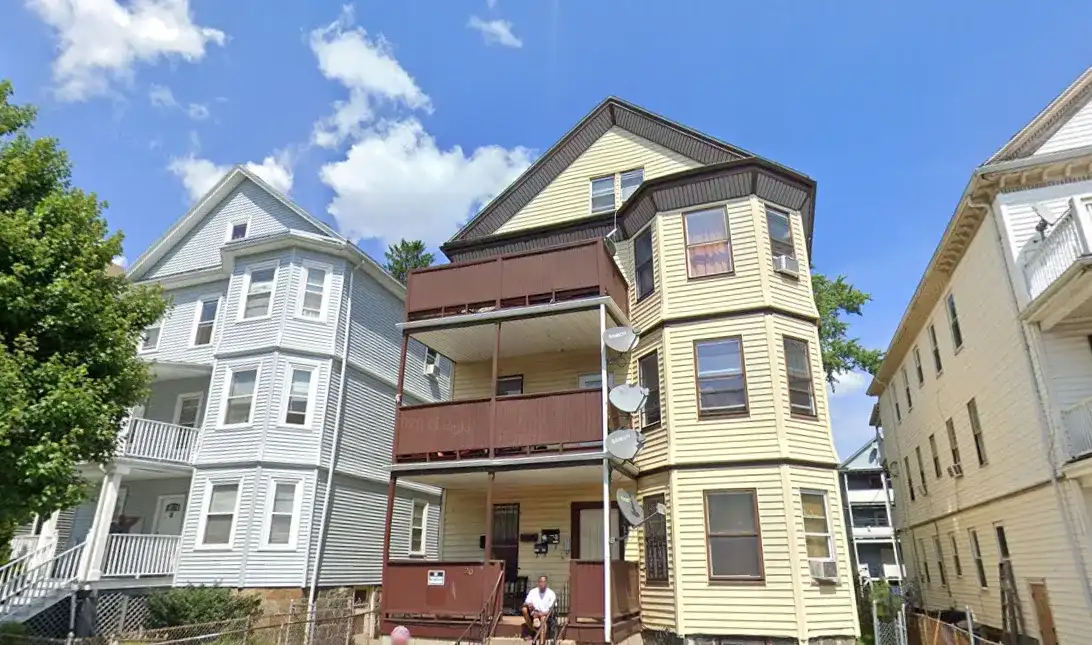
If addiction were so easy, people wouldn’t want to quit and wouldn’t have to quit. A basic fear of recovery is that the individual is not capable of recovery. The belief is that recovery requires some special strength or willpower that the individual does not possess. Past relapses are taken as proof that the individual does not have what it takes to recover [9]. Cognitive therapy helps clients see that recovery is based on coping skills and not willpower. In bargaining, individuals start to think of scenarios in which it would be acceptable to use.
Why Does a Relapse Happen?

Sleep regulates and restores every function of the human body and mind. The power to resist cravings rests on the ability to summon and interpose judgment between a craving and its intense motivational command to seek the substance. Stress and sleeplessness weaken the prefrontal cortex, the executive control center of the brain. Alcohol use disorder can include periods of being drunk (alcohol intoxication) and symptoms of withdrawal. Relapse can be an indication that treatment needs to be reinstated or adjusted. Sticking with treatment for the entire length of the program is important, too.
Professional Associations of Medical and Nonmedical Addiction Specialists
- Therefore, a return to drug or alcohol use may seem like a good way to get back to feeling OK, curbing withdrawal symptoms, and combating strong cravings.
- Combining therapy with support groups can greatly improve your odds of success.
- No relapse is too big to recover from, and in fact, you can take immediate action to regain your sobriety.
- Stopping drug use is just one part of a long and complex recovery process.
A person’s support system may also play an important role in recovery and the avoidance of relapse. Family counseling and therapy sessions may help loved ones to better understand the disease of addiction and learn to recognize potential relapse triggers and https://ecosoberhouse.com/ ways they can support in those instances. Communication skills and the overall family dynamic may improve through family therapy as well. Professional treatment can help manage both the psychological and physical factors of addiction to promote recovery.
- Clinical experience has shown that everyone in early recovery is a denied user.
- Setbacks are a normal part of progress in any aspect of life.
- They see setbacks as failures because the accompanying disappointment sets off cascades of negative thinking and feeling, on top of the guilt and shame that most already feel about having succumbed to addiction.
- They are caused by insufficient coping skills and/or inadequate planning, which are issues that can be fixed [8].
- However, it is never too late to recover from a relapse, so don’t be discouraged if you think you’ve gone too far back into your addiction.
What To Do After a Relapse
Experts in addiction recovery believe that relapse is a process that occurs somewhat gradually; it can begin weeks or months before picking up a drink or a drug. Moreover, it occurs in identifiable stages, and identifying the stages can help people take action to prevent full-on relapse. Relapse is most likely in the first 90 days after embarking on recovery, but in general it typically happens within the first year.
Alcohol Use Disorder: From Risk to Diagnosis to Recovery
For some reason, you decide that participating in your recovery program is just not as important as it was. You might feel like something is wrong but can’t identify exactly what it is. If you are working toward long-term sobriety and want to avoid having a relapse, it is important to recognize the following warning signs. If you can identify them, you can take action to keep them from progressing into a full-blown relapse. It can bring on feelings of shame, frustration, and often cause someone to feel as if they are incapable of changing their behavior or achieving their goals. At this stage, working toward avoiding triggers or high-risk situations in which relapse could occur is critical.
A health care provider can look at the number, pattern, and severity of symptoms to see whether AUD is present and help you decide the best course of action. AUD is characterized by an impaired ability to stop or control alcohol use despite adverse social, occupational, or health consequences. Health care providers diagnose AUD when a person has two or more of the symptoms listed below.
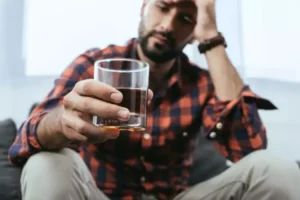
How common are relapses?
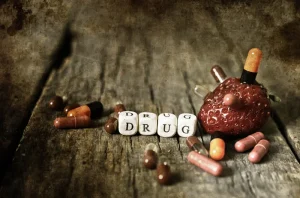
If you think you may have a drinking problem, you’re definitely not alone. In 2021, researchers estimated nearly 30 million people ages 12 years and older in the United States had alcohol use disorder (AUD). Recovery from alcohol addiction generally follows the stages of abstinence, withdrawal, repair, and growth. Returning to rehab after an alcohol relapse may seem disheartening, but seeking treatment can open the doors to hope and healing. If you or a loved one has relapsed—or you’re simply ready to learn more about your options—AAC can help. Preventing a relapse starts with having a strong recovery plan.
- Therapy combined with an AUD program tends to lead to a high recovery success rate.
- Setbacks can set up a vicious cycle, in which individuals see setbacks as confirming their negative view of themselves.
- Relapse rates for drug use are similar to rates for other chronic medical illnesses.
- • Unpleasant feelings including hunger, anger, loneliness, and fatigue.
Clinical experience has shown that the following are some of the causes of relapse in the growth stage of recovery. The negative thinking that underlies addictive thinking is usually all-or-nothing thinking, disqualifying the positives, catastrophizing, and negatively self-labeling [9]. These thoughts can lead to anxiety, resentments, Alcohol Relapse stress, and depression, all of which can lead to relapse. Cognitive therapy and mind-body relaxation help break old habits and retrain neural circuits to create new, healthier ways of thinking [12,13]. The transition between emotional and mental relapse is not arbitrary, but the natural consequence of prolonged, poor self-care.
What is a Relapse?
Some events or experiences can be avoided with a polite excuse. In the face of a craving, it is possible to outsmart it by negotiating with yourself a delay in use. It hinges on the fact that most cravings are short-lived—10 to 15 minutes—and it’s possible to ride them out rather than capitulate. Choose to get help, even though shame often deters people from doing so. If you are at a gathering where provocation arises because alcohol or other substances are available, leave. Cravings can intensify in settings where the substance is available and use is possible.
How to Properly Store Urine: Effective Methods and Best Practices
By following these temperature control guidelines, you can maintain the integrity and validity of the urine sample during overnight storage. Remember to review the specific requirements provided for your drug test to ensure compliance. Proceed to the next step to learn about proper labeling of the urine sample. In this comprehensive guide, we will walk you through the methods and proper procedures for storing urine overnight.
Proper storage guarantees accurate results while preventing contamination and degradation. In this article, we will discuss how to store a urine sample correctly. By following these labeling guidelines, you can ensure that your urine sample is properly identified and ready for storage overnight. Accurate labeling helps to maintain the integrity of the sample and ensures smooth processing during the testing phase. By following these steps, you can collect a clean and adequate urine sample for storage overnight. Proper collection is essential to maintain the integrity of the sample and ensure accurate test results.
- By following the step-by-step process outlined in this guide, you can effectively store your urine sample and preserve its quality.
- By following the recommended steps, taking precautions, and adhering to specific instructions, you can maintain the quality of the urine sample and ensure accurate and reliable test results.
- Remember to always consult with your healthcare provider or the instructions provided by the testing facility for any specific requirements or recommendations.
- Storing clean urine is necessary for a variety of reasons, ranging from medical purposes to drug screening.
- Adhering to these guidelines is crucial to ensure compliance and the accuracy of the drug test results.
Choosing the Right Container for Storing Urine
However, what it does mean that you need to store the urine sample in the freezer instantly. Once frozen, the urine sample can last up to 6 months, at least for the really good brands. Consider the length of time for which you will be storing your pee when selecting an appropriate container size.
For those who need to keep a urine sample fresh overnight or for less than 24 hours, placing it in the fridge is a suitable option. Our content, validated by Expert Board Contributors, is crafted following stringent Editorial Policies. We’re committed to providing you with well-researched, expert-backed insights for all your informational needs. Additionally, be aware that drug testing regulations and procedures may vary depending on your location, industry, or specific circumstances. Stay informed about the regulations and requirements relevant to your situation.
Synthetic Urine Can Be Heated Up In A Microwave. But…
It is also recommended to use single-use disposable containers for certain medical tests to ensure the highest level of sample integrity and minimize the risk of cross-contamination. The heating pad is regarded as the most efficient way of regulating the urine sample’s correct temperature. This is because the urine samples get a constant supply of heat that is neither too much or too low, so as to cause alterations, at all times. With these steps completed, you have successfully stored your urine sample. Now you can confidently proceed with submitting it for testing or any other necessary purposes. Store the urine sample in a clean, airtight container and keep it refrigerated until it can be delivered to the testing facility.
Collecting the sample correctly is also vital, following proper techniques like washing hands, choosing the right time, and transferring how to store pee the sample into the container. It’s crucial to remember that this article is a general guide and should not replace any specific instructions or guidelines provided by the testing facility. Always follow their recommendations to ensure compliance and accurate results.
Proper storage will help avoid contamination, maintain the stability of the sample, and provide accurate test results. By carefully considering the material, closure, size, transparency, and labeling of the container, you can choose the most suitable vessel for storing your precious pee samples. These considerations will help preserve the integrity of the sample and ensure accurate test results, whether you are conducting personal experiments or submitting urine samples for medical testing. By adhering to these guidelines, you can safely transport the urine sample from your storage location to the testing facility. Proper transportation practices help maintain the integrity of the sample and ensure accurate test results.
By understanding and implementing the correct storage methods, you can ensure the reliability and validity of urine samples for various purposes. While it might not be your typical conversation topic, understanding how to properly store urine can actually be quite useful. Whether you’re storing pee for medical tests or practical uses, having the right knowledge and tools is key to maintaining the integrity and accuracy of the sample. By following these methods, you can store your urine sample safely and maintain its integrity overnight. Remember to check the specific requirements and instructions provided for your drug test to ensure compliance and accurate results.
Step 5: Storing the Urine Sample Properly
Choosing the right container, handling the urine sample with care during collection, and sealing it in a leak-proof and airtight container are essential steps in preserving the integrity of the urine. Storing the sample in a cool and dark place, avoiding exposure to light and extreme temperatures, and following recommended storage durations are also crucial. Overall, understanding the importance of storing clean urine is crucial for accurate medical testing, drug screening, medical research, and personal preservation reasons. By storing urine properly using the appropriate techniques, individuals can rest assured that the samples will remain uncontaminated and viable for their intended purpose. In this article, we will guide you through the process of safely and effectively storing a urine sample overnight.
If you don’t know the answer to these questions you are probably going to fail the pee sample test. If the final temperature is past what was expected, you can always allow it to cool. Keep in mind the temperature range should not be too low or again too high for that matter. What is even worse is that it will definitely give you a failed result if you don’t keep the temperature in check throughout the whole process.
If it’s just for an hour or two, then any small container would do fine; however, if it’s overnight or longer than twenty-four hours, consider larger containers. Remember, a drug test collector will visually inspect the urine sample. If they notice that the urine is spoiled, you’ll have to resubmit the sample under direct observation. This means someone will watch as the urine comes out of your body, making it impossible to fake the test. If you see any of these signs in your urine, you’ll need another sample.
10 Must-See Recovery Tattoo Ideas for a Fresh Start
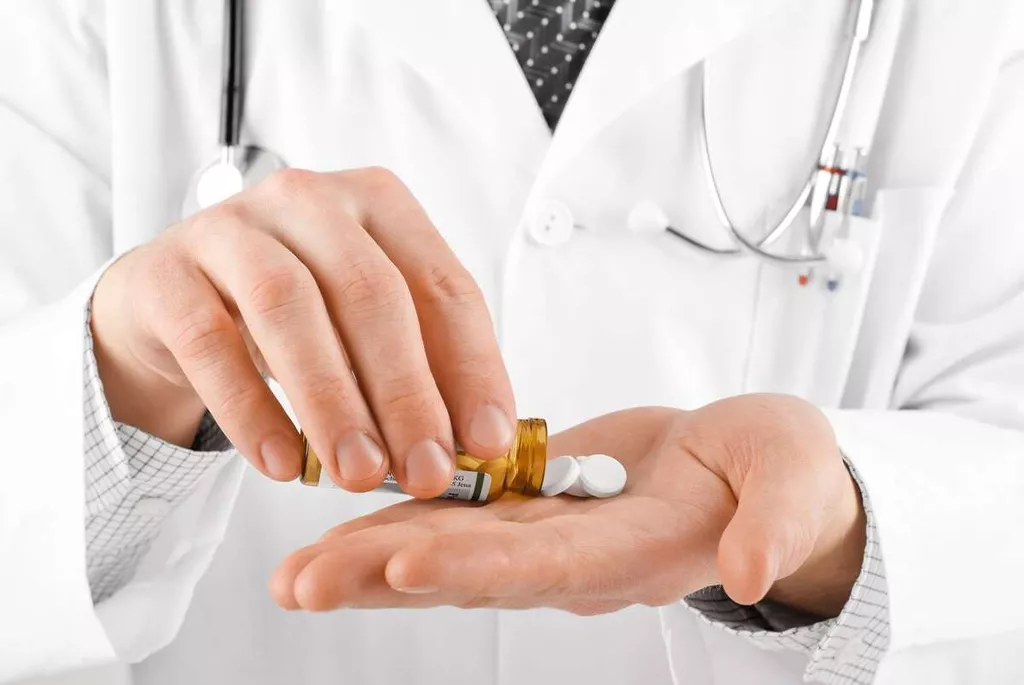
It represents the principles of unity, recovery, and service, as well as growth and new beginnings—a powerful reminder of the wearer’s journey and commitment to sobriety. This sobriety tattoo features an inspirational quote inked in a simple, elegant script on the wearer’s side. The meaningful sobriety tattoos message honors the strength and power within, a common theme for those celebrating recovery tattoos and embracing a sober lifestyle.
- Such sobriety tattoos are also the only reminder you need to stay on your current path.
- For those in recovery, this symbol can represent finding equilibrium between past struggles with addiction and embracing a new life of living sober.
- These values help to address the three branches of addiction as a disease – the mental, physical, and spiritual.
- These designs serve as a constant reminder of your strength and commitment to a sober life.
Addiction Recovery Tattoos
I will provide you with personalized small American flag tattoo ideas and designs. I will provide you with unique and creative miracle tattoo ideas that align with your preferences and inspire awe. I will help you find the perfect tattoo design that incorporates automotive and mechanical elements, tailored to your personal https://ecosoberhouse.com/ style and preferences. Tattoos, for many people, offer a way to immortalize important symbols and ideas through having them permanently inked on their bodies.
A Serenity Prayer: Symbolizing faith

In English Literature from the University of Massachusetts, he works to help Find Addiction Rehabs as both a writer and marketer. Edward loves to share his passion for the field through writing about addiction topics, effective treatment for addiction, and behavioral health as a whole. Alongside personal experience, Edward has deep connections to the mental health treatment industry, having worked as a medical office manager for a psychiatric consortium for many years. Sobriety tattoos are not exclusive to persons struggling with alcohol or drug addiction.

Minimalist Styles
I will help you discover unique and meaningful sacrifice tattoo ideas that reflect the concept of sacrifice and resonate with your personal story. Whether you’re looking for a ribbon, butterfly, or wolf design, I can provide suggestions that align with your preferences and help you express your support and awareness for lupus. The traditional tattooing style involves the use of bold, sharp outlines and softly blended, vibrant shades. Besides a lotus, you can consider getting any other recovery symbols in this style. Ultimately it is up to the wearer to personalize their sobriety tattoo in a way that is most encouraging to them.
Find inspiration for your next tattoo that symbolizes overcoming addiction and your path to recovery. I will help you find meaningful and personalized tattoo ideas that symbolize your journey of overcoming addiction and maintaining sobriety. Whether you are looking for a specific symbol, date, or theme, I will provide thoughtful suggestions to help you commemorate your recovery. I will help you find meaningful tattoo ideas that symbolize your journey through addiction recovery.
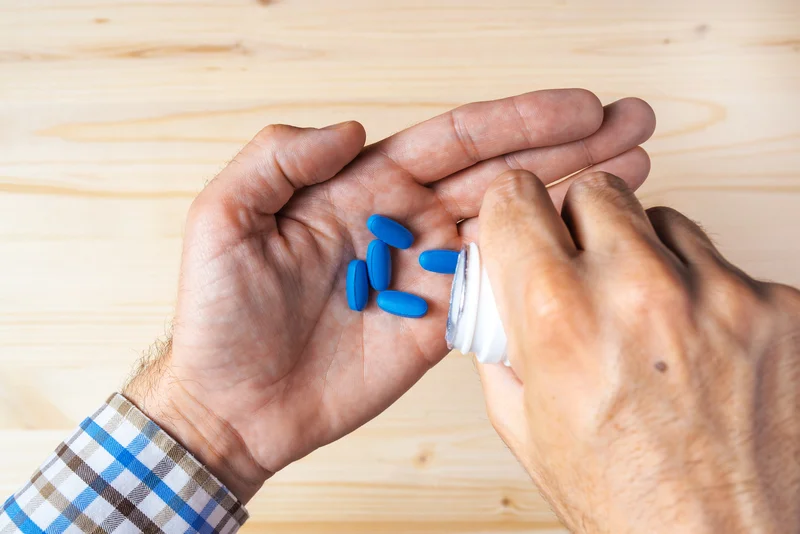
It could range from abstract designs that map out the emotional landscape of recovery to more literal depictions of critical moments or influential figures in their path to sobriety. Crafting such a tattoo requires introspection and creativity, leading to a piece that not only narrates one’s past struggles but also celebrates the ongoing commitment to a sober life. The process itself can be therapeutic, compelling individuals to acknowledge their growth and the lessons learned along the way. This detailed tattoo captures a powerful moment of resilience and recovery. A person, in a stance of support and self-love, embraces their own body atop a base of sturdy, weathered wood representing a foundation of strength. It’s a vivid symbol for those seeking sobriety tattoos or recovery tattoo ideas—perfect for anyone commemorating a personal journey with recovery tattoos.
- This Mental Health Awareness Month, your gift will be matched up to $15K to help protect progress.
- The imagery might include a staircase, representing the steps, or visual representations of key concepts like surrender, acceptance, and recovery.
- It’s a proud statement for those on a recovery journey, celebrating their commitment to stay sober and embracing the beauty of a clean lifestyle.
- Explore a wide range of sobriety tattoos that symbolize your journey towards a sober life.
- I will help you find meaningful tattoo ideas that symbolize overcoming hard times and life struggles.
Sobriety Tattoo: Inspiring Recovery Designs for a Stronger Journey
This is because abstract tattoos use shapes, colors and symbols to help express a deeper emotion or experience that is too complex to express with your typical tattoo style. Discover a variety of tattoo symbols for sobriety, including AA symbol tattoos, recovery symbols for tattoos, and more. These designs are perfect for representing your journey to sobriety and recovery from addiction. Finding unique ways to express personal journeys and inner transformation is a powerful part of self-expression. In regard to sobriety tattoos, one of the fundamental aspects of the design is the symbolism it carries. Every individual’s journey is unique, allowing for creative freedom in choosing meaningful symbols.
- Perfect for anyone seeking meaningful recovery tattoos to celebrate their resilience and commitment to a sober life.
- It’s essential to find someone who not only possesses the skill to bring your vision to life but understands the weight of what the tattoo represents.
- Explore tattoo ideas for recovering addicts and mark your sobriety with pride.
- This permanence of ink on the skin is a daily reminder of their commitment to sobriety and a motivator to continue on their path to recovery.

Therefore, they are not afraid to show that they have been addicted but are now sober. This kind of sobriety tattoo is often going to be done in a traditional style. Of course, you are also free to get a more modernized version of your sobriety tattoo.
StyleCraze provides content of general nature that is designed for informational purposes only. The content is not intended to be a substitute for professional medical advice, diagnosis, or treatment. Share your stories, experiences, and insights to connect with other beauty, lifestyle, and health enthusiasts. Yes, they can mark triumphs over other challenges like depression or eating disorders. To provide inspiration, reinforcement, and motivation for maintaining what is alcoholism sobriety. People also get this tattoo in the form of the word “cont;nue” to show that the pause doesn’t mean the end, just like the struggles in life.
This personal symbol becomes a permanent badge of honor, a reminder of the strength and perseverance it takes to overcome addiction and embrace sobriety with courage and grace. Sober living programs, like those offered by the RECO Institute, are critical steps in the journey toward lifelong sobriety. Incorporating the symbols of these programs into a tattoo can serve as a powerful reminder of the principles and support systems that help individuals achieve and maintain sobriety.
Treatment and Recovery National Institute on Drug Abuse NIDA
An outpatient rehab can offer you a combination of medication-assisted recovery together with group and/or individual therapy without having to leave home to stay in an inpatient or residential treatment center. Getting sober takes time and effort, and those enrolled in a treatment program must be fully committed to attaining sobriety. Many people want to rebuild the relationships they had with their children, spouses, or other family members. Others simply want to stop being under the influence of substances that make them behave in ways they should not.
Identifying the 5 Most Common Drug Interactions
During this phase, cravings are decreased unless they are triggered. Ideally, after completing a drug or alcohol detox program, individuals will enter an inpatient addiction treatment program. In a residential or even outpatient program, someone in https://prodobavki.com/legacy_documents/24.html recovery can learn coping skills and plan for relapse prevention.
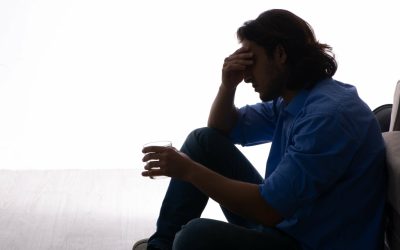
Exploring the Proper Detox Definition
Reputable, research-based treatment programs select therapies and interventions to match your personal needs. For example, a Veteran with post-traumatic stress disorder (PTSD) who misuses cocaine, doesn’t have the same needs as a stay-at-home mom struggling with alcohol use. When reaching out to family and friends for support, it’s important to choose wisely. In fact, your journey to sobriety will likely involve strengthening some relationships and purging others. You may find yourself leaning on your trusted support system a lot and breaking ties with those who do not aid you in your recovery. Contrary to the name, not every 90-day rehab program is exactly 90 days, but most average about 3 months.
- Discover how inpatient rehab durations vary from 28 days to 6+ months.
- For instance, if your substance use disorder is diagnosed as mild, an outpatient program might be recommended.
- People often need to address past trauma or familial issues during this time.
- No one can wave a magic wand and make you or someone you love sober.
- However, in cases where treatment is undergone as part of a full continuum of care, a client’s time in outpatient care may be significantly shorter.
Identify Your Triggers
In the past, people believed that you had to “hit bottom” before you could successfully recover. If you can find the motivating factors, you don’t need to lose everything before you recover from addiction to alcohol or drugs. Individuals who suffer from chronic pain, for instance, may become addicted to prescription opioids.

Discover the need for drug addicts recovery, from overcoming challenges to embracing healthier lifestyles. ‘, http://massage-relaks.ru/tovary-i-uslugi/massazhery-i-massazhnye-kresla/fitstudio-foot-therapy1.html break stigmas, and discover resources for assistance and understanding. ‘ from types, symptoms, impacts on health, to available help and resources.
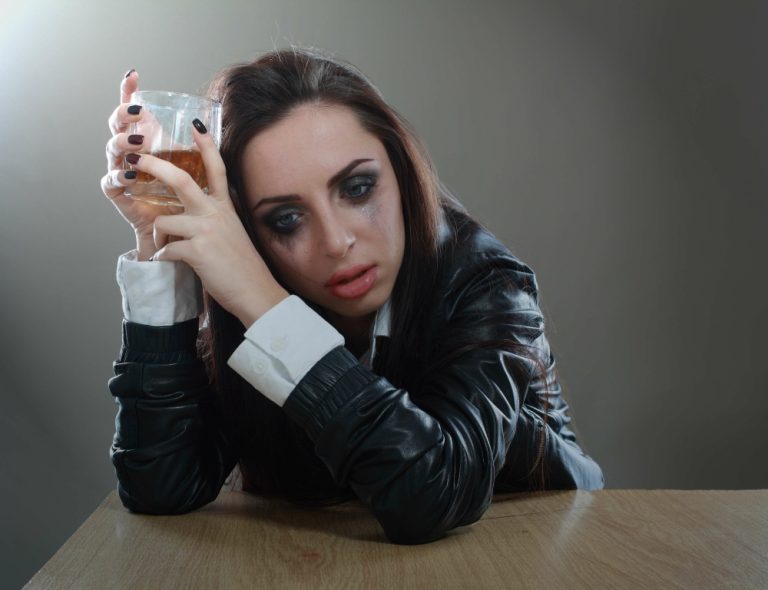

Tetrault outlines some short- and long-term treatment and therapy options that can help you achieve abstinence. “Overall, if an individual’s goal is to stop using substances, it is important to recognize that harmful substance use and abstinence exist on a continuum. The term ‘sobering up’ suggests that it is an all or none phenomenon, which is inaccurate,” says Tetrault. In this article, we’ll provide a comprehensive guide to understanding and navigating sobriety. It aims to offer insights into the benefits of a sober lifestyle and share the resources and support systems available to those pursuing sobriety. By Michelle PugleMichelle Pugle writes health articles for award-winning websites, as seen in Healthline, Verywell, Everyday Health, and Psych Central.
- Many people who misuse alcohol or drugs have trouble dealing with anger.
- As described by the National Institute on Drug Abuse, there is not a one-size-fits-all treatment program for addiction.
- Many with relatively severe substance use issues elect to attend inpatient or residential rehab programs.
- Discover more about drug withdrawal timelines and gain insights into what you can expect at each phase of detox.
- Drug rehab involves a comprehensive process of detoxification, personalized therapy, and ongoing aftercare to help individuals overcome substance abuse and maintain long-term sobriety.
- This broader definition acknowledges that different people have different paths to recovery and that what works for one person may not work for another.
- Stopping drug use is just one part of a long and complex recovery process.
- Discover how much alcohol can kill you, understand BAC, and learn prevention strategies for safer drinking.
- On average, medical detox treatment tends to last for four days, as this is how long most acute symptoms of withdrawal last.
These treatment options may be located in acute care hospitals or freestanding treatment centers. Many people starting professional addiction treatment will begin the path to recovery with a period ofdetoxification. Detox is a general term used to describe the body’s process of removing alcohol and other drugs from the system. The hope is that you will be ready to resume daily life after treatment, manage stressors and triggers, and stay sober for the long term. The reality is that many situations can make it hard to reintegrate into normal life without some hiccups and potential for relapse. Aftercare programs make it easier to remain in recovery and avoid returning to substance use.
At some meetings, a recovering person may share his or her experiences and struggles with addiction and recovery. Discover the empowering steps of recovery from addiction, from therapy to resources for help. Discover the three features of the best drug rehab centers to ensure successful recovery https://handbookbride.ru/watch-wedding/musik/207-ricky-martin-livin-la-vida-loca.html and wellness. Discover the different types of psychotherapy and their benefits to understand and improve mental health. Unearth the path to recovery by finding good drug treatment centers tailored to your unique needs. Beginning an alcohol detox is an essential step toward overcoming addiction and starting the journey to sobriety.
Tylenol and Alcohol Can You Drink On Tylenol?
If you’re taking medications to manage your pain, talk to your doctor or pharmacist about any reactions that may result from mixing them with alcohol. Laboratory studies confirm that alcohol does indeed reduce pain in humans and in animals. Moreover, recent research suggests that as many as 28 percent of people experiencing chronic pain turn to alcohol to alleviate their suffering. Despite this, using alcohol to alleviate pain places people at risk for a number of harmful health consequences. You’ve probably heard that taking an aspirin before a night out can help prevent a hangover in the morning.
The list presented here does not include all the medicines that may interact harmfully with alcohol. Most important, the list does not include all the ingredients in every medication. Some medicines that you might never have suspected can react with alcohol, including many medications which can be purchased “over-the-counter”—that is, without a prescription. Even some herbal remedies can have harmful effects when combined with alcohol.
Is It Safe to Drink Alcohol While Taking Acetaminophen?
Many enzymes in your body break down acetaminophen and other drugs so your body can use them. Some research has found that alcohol does not appear to worsen liver inflammation in certain people who take medication for their cholesterol. A 2006 Harvard study found that moderate alcohol use did not have a significant negative effect on the livers of men taking statins after heart surgery. Medications that are prescribed to treat nausea can make you feel drowsy, dizzy, and may impair your motor control—symptoms that can also be caused by alcohol.
The liver is responsible for breaking down acetaminophen and alcohol. Due to this, excessive consumption of both alcohol and acetaminophen can have dangerous side effects. In this article, we outline the side effects and risks of taking acetaminophen and alcohol together and give tips on how to stay safe. However, for people who take too much of the drug or who have existing liver problems, the damage can be lasting and even cause death. Is it bad to have a drink from time to time if you have chronic pain? As long as you are not taking medications that interact with alcohol, probably not.
Cholesterol Medications
But keep in mind that the greatest risk is seen with heavy drinking and/or high doses of Tylenol. If you regularly drink three alcoholic beverages or more per day, talk with your healthcare provider about which pain medication is best for you. The type of liver damage from misuse of alcohol and acetaminophen is called acute liver damage.
- Other popular OTC pain medicines like aspirin and NSAIDs are also risky when taken with alcohol.
- You may also want to get curious about your alcohol intake and whether reducing or eliminating alcohol may benefit your health.
- If you regularly drink or plan to for a special occasion, choosing a pain reliever that isn’t affected by alcohol can be tricky.
- A healthy person may safely use Tylenol while drinking lightly and infrequently, but safety is not guaranteed.
The liver enzyme CYP2E1 breaks down Tylenol into a substance called NAPQI, which can harm the liver. According to guidelines from the United States Food and Drug Administration (FDA), you shouldn’t drink alcohol if you take Tylenol. With this in mind, you might need to consider how long after taking Tylenol can you drink alcohol when consuming both. No content on this site, regardless of date, should ever be used as a substitute for direct medical advice from your doctor or other qualified clinician. Excessive consumption of either, or both, can cause potentially severe, and even fatal, side effects. NSAIDs work slightly differently from acetaminophen as they not only relieve pain but also have anti-inflammatory effects.
Small amounts of alcohol can make it dangerous to drive, and when you mix alcohol with certain medicines you put yourself at even greater risk. Combining alcohol with some medicines can lead to falls and serious injuries, especially among older people. This pamphlet lists medications that can cause harm when taken with alcohol and describes the effects that can result. The list gives the brand name by which each medicine is commonly known (for example, Benadryl®) and its generic name or active ingredient (in Benadryl®, this is diphenhydramine).
When alcohol enters the picture, it increases the activity of CYP2E1, so the body produces more of the NAPQI toxin. Alcohol also decreases glutathione production, meaning NAPQI is more likely to build up in the liver in dangerous concentrations. Talk to your doctor before using acetaminophen if you’re not sure if you drink too frequently to use this drug. Alcohol and medication can have a harmful interaction even if they’re taken at different times.
Substances
This can also be the case when people who drink alcohol regularly take too much of this medication. The best way to avoid complications is to take the right amount of acetaminophen for a safe length of time and to drink only moderate amounts of alcohol. If you have liver disease or increased risk factors for liver disease, talk to your doctor about other pain remedies that are safer for you. If you binge drink or frequently drink a lot of alcohol, you’re also at increased risk of liver damage. It’s important to be honest with your doctor about the amount of alcohol you drink. They won’t judge you, and they need to know the truth so that they can make the best recommendation for your health.
Health Products
On their own, opioids can cause drowsiness, dizziness, slowed or impaired breathing, impaired motor control, abnormal behavior, and memory loss. As with cold and flu remedies, combining alcohol with medications used to treat a cough can cause drowsiness, dizziness, and motor impairment. The effects of the mix can be especially serious—if not deadly—when the cough medicine also contains alcohol. In addition to worsening the side effects of antidepressant medications, mixing these drugs with alcohol can also make symptoms of depression worse. The effects of mixing alcohol with medication also depend on certain individual factors. For example, women can experience the effects of mixing alcohol and medications more severely than men because of differences in metabolism.
You will want to avoid alcohol The Link Between Alcohol and Suicide for three days before you start and after you stop Flagyl. Angina (ischemic chest pain) is caused by reduced blood flow to the heart. If you have angina, you might be prescribed a medication called nitroglycerin. Alcohol can make some medications less effective by interfering with how they are absorbed in the digestive tract.

